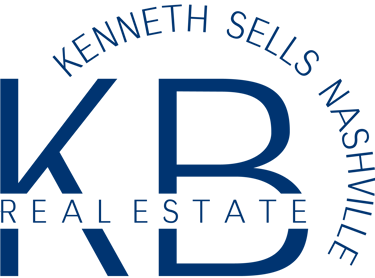NAR Existing-Home Sales Report Shows 2.0% Increase in July 2025
Month-over-month sales increased in the Northeast, South, and West, and fell in the Midwest.
MARKET CONDITIONSEXISTING-HOME SALES


NAR Existing-Home Sales Report Shows 2.0% Increase in July
National Association of REALTORS®, Media Relations Division | August 21, 2025
Month-over-month
2.0% increase in existing-home sales – seasonally adjusted annual rate of 4.01 million in July.
0.6% increase in unsold inventory – 1.55 million units equal to 4.6 months' supply.
Year-over-year
0.8% increase in existing-home sales
0.2% increase in median existing-home sales price to $422,400.
WASHINGTON (August 21, 2025) – Existing-home sales increased by 2.0% in July, according to the National Association of REALTORS® Existing-Home Sales Report. The Report provides the real estate ecosystem, including agents and homebuyers and sellers, with data on the level of home sales, price, and inventory.
Month-over-month sales increased in the Northeast, South, and West, and fell in the Midwest. Year-over-year, sales rose in the South, Northeast, and Midwest, and fell in the West.
"The ever-so-slight improvement in housing affordability is inching up home sales," said NAR Chief Economist Lawrence Yun. "Wage growth is now comfortably outpacing home price growth, and buyers have more choices. Condominium sales increased in the South region, where prices had been falling for the past year."
"Near-zero growth in home prices suggests that roughly half the country is experiencing price reductions. Overall, homeowners are doing well financially. Only 2% of sales were foreclosures or short sales – essentially a historic low. The market's health is supported by a cumulative 49% home price appreciation for a typical American homeowner from pre-COVID July 2019 to July this year," Dr. Yun continued.
"Homebuyers are in the best position in more than five years to find the right home and negotiate for a better price. Current inventory is at its highest since May 2020, during the COVID lockdown."
National Snapshot
2.0% increase in total existing-home sales month-over-month to a seasonally adjusted annual rate of 4.01 million.
0.8% increase in sales year-over-year.
Inventory in July
1.55 million units: Total housing inventory , up 0.6% from June and increased 15.7% from July 2024 (1.34 million).
4.6-month supply of unsold inventory, down from 4.7 months in June and up from 4 months in July 2024.
Median Sales Price in July
$422,400: Median existing-home price for all housing types, up 0.2% from one year ago ($421,400) – the 25th consecutive month of year-over-year price increases.
Single-Family and Condo/Co-op Sales
Single-Family Homes in July
2.0% increase in sales to a seasonally adjusted annual rate of 3.64 million, up 1.1% from July 2024.
$428,500: Median home price in July, up 0.3% from last year.
Condominiums and Co-ops in July
2.8% increase in sales month-over-month to a seasonally adjusted annual rate of 370,000 units, down 2.6% year-over-year.
$362,600: Median price, down 1.2% from July 2024.
Regional Snapshot for Existing-Home Sales in July
Northeast
8.7% increase in sales month-over-month to an annual rate of 500,000, up 2.0% year-over-year.
$509,300: Median price, up 0.8% from July 2024.
Midwest
1.1% decrease in sales month-over-month to an annual rate of 940,000, up 1.1% year-over-year.
$333,800: Median price, up 3.9% from July 2024.
South
2.2% increase in sales month-over-month to an annual rate of 1.85 million, up 2.2% year-over-year.
$367,400: Median price, down 0.6% from July 2024.
West
1.4% increase in sales month-over-month to an annual rate of 720,000, down 4.0% year-over-year.
$620,700: Median price, down 1.4% from July 2024.
REALTORS® Confidence Index for July
28 days: Median time on market for properties, up from 27 days last month and 24 days in July 2024.
28% of sales were first-time homebuyers, down from 30% in June and 29% in July 2024.
31% of transactions were cash sales, up from 29% a month ago and 27% in July 2024.
20% of transactions were individual investors or second-home buyers, up from 14% last month and 13% in July 2024.
2% of sales were distressed sales (foreclosures and short sales), down slightly from 3% in June and up slightly from 1% in July 2024.
Mortgage Rates
6.72%: The average 30-year fixed-rate mortgage in July, according to Freddie Mac, down from 6.82% in June and 6.85% one year ago.
About the National Association of REALTORS®
The National Association of REALTORS® is involved in all aspects of residential and commercial real estate. The term REALTOR® is a registered collective membership mark that identifies a real estate professional who is a member of the National Association of REALTORS® and subscribes to its strict Code of Ethics.
Existing-home sales, which include single-family, townhomes, condominiums and co-ops, are based on transaction closings from Multiple Listing Services. Changes in sales trends outside of MLSs are not captured in the monthly series. NAR benchmarks home sales periodically using other sources to assess overall home sales trends, including sales not reported by MLSs.
Existing-home sales, based on closings, differ from the U.S. Census Bureau's series on new single-family home sales, which are based on contracts or the acceptance of a deposit. Because of these differences, it is not uncommon for each series to move in different directions in the same month. In addition, existing-home sales, which account for more than 90% of total home sales, are based on a much larger data sample – about 40% of multiple listing service data each month – and typically are not subject to large prior-month revisions.
The annual rate for a particular month represents what the total number of actual sales for a year would be if the relative pace for that month were maintained for 12 consecutive months. Seasonally adjusted annual rates are used in reporting monthly data to factor out seasonal variations in resale activity. For example, home sales volume is normally higher in the summer than in the winter, primarily because of differences in the weather and family buying patterns. However, seasonal factors cannot compensate for abnormal weather patterns.
